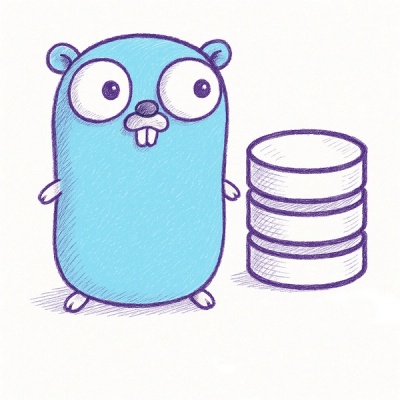
Security News
Browserslist-rs Gets Major Refactor, Cutting Binary Size by Over 1MB
Browserslist-rs now uses static data to reduce binary size by over 1MB, improving memory use and performance for Rust-based frontend tools.
github.com/gophercloud/gophercloud
Gophercloud is an OpenStack Go SDK.
Reference a Gophercloud package in your code:
import "github.com/gophercloud/gophercloud"
Then update your go.mod:
go mod tidy
Because you'll be hitting an API, you will need to retrieve your OpenStack
credentials and either store them in a clouds.yaml file, as environment
variables, or in your local Go files. The first method is recommended because
it decouples credential information from source code, allowing you to push the
latter to your version control system without any security risk.
You will need to retrieve the following:
For users who have the OpenStack dashboard installed, there's a shortcut. If
you visit the project/api_access path in Horizon and click on the
"Download OpenStack RC File" button at the top right hand corner, you can
download either a clouds.yaml file or an openrc bash file that exports all
of your access details to environment variables. To use the clouds.yaml file,
place it at ~/.config/openstack/clouds.yaml. To use the openrc file, run
source openrc and you will be prompted for your password.
Once you have access to your credentials, you can begin plugging them into Gophercloud. The next step is authentication, which is handled by a base "Provider" struct. There are number of ways to construct such a struct.
With gophercloud/utils
The github.com/gophercloud/utils
library provides the clientconfig package to simplify authentication. It
provides additional functionality, such as the ability to read clouds.yaml
files. To generate a "Provider" struct using the clientconfig package:
import (
"github.com/gophercloud/utils/openstack/clientconfig"
)
// You can also skip configuring this and instead set 'OS_CLOUD' in your
// environment
opts := new(clientconfig.ClientOpts)
opts.Cloud = "devstack-admin"
provider, err := clientconfig.AuthenticatedClient(opts)
A provider client is a top-level client that all of your OpenStack service clients derive from. The provider contains all of the authentication details that allow your Go code to access the API - such as the base URL and token ID.
Once we have a base Provider, we inject it as a dependency into each OpenStack service. For example, in order to work with the Compute API, we need a Compute service client. This can be created like so:
client, err := clientconfig.NewServiceClient("compute", opts)
Without gophercloud/utils
Note gophercloud doesn't provide support for
clouds.yamlfile so you need to implement this functionality yourself if you don't wish to usegophercloud/utils.
You can also generate a "Provider" struct without using the clientconfig
package from gophercloud/utils. To do this, you can either pass in your
credentials explicitly or tell Gophercloud to use environment variables:
import (
"github.com/gophercloud/gophercloud"
"github.com/gophercloud/gophercloud/openstack"
)
// Option 1: Pass in the values yourself
opts := gophercloud.AuthOptions{
IdentityEndpoint: "https://openstack.example.com:5000/v2.0",
Username: "{username}",
Password: "{password}",
}
// Option 2: Use a utility function to retrieve all your environment variables
opts, err := openstack.AuthOptionsFromEnv()
Once you have the opts variable, you can pass it in and get back a
ProviderClient struct:
provider, err := openstack.AuthenticatedClient(opts)
As above, you can then use this provider client to generate a service client for a particular OpenStack service:
client, err := openstack.NewComputeV2(provider, gophercloud.EndpointOpts{
Region: os.Getenv("OS_REGION_NAME"),
})
We can use the Compute service client generated above for any Compute API
operation we want. In our case, we want to provision a new server. To do this,
we invoke the Create method and pass in the flavor ID (hardware
specification) and image ID (operating system) we're interested in:
import "github.com/gophercloud/gophercloud/openstack/compute/v2/servers"
server, err := servers.Create(client, servers.CreateOpts{
Name: "My new server!",
FlavorRef: "flavor_id",
ImageRef: "image_id",
}).Extract()
The above code sample creates a new server with the parameters, and embodies the
new resource in the server variable (a
servers.Server struct).
Have a look at the FAQ for some tips on customizing the way Gophercloud works.
Gophercloud versioning follows semver.
Before v1.0.0, there were no guarantees. Starting with v1, there will be no breaking changes within a major release.
See the Release instructions.
See the contributing guide.
If you're struggling with something or have spotted a potential bug, feel free to submit an issue to our bug tracker.
FAQs
Unknown package
Did you know?

Socket for GitHub automatically highlights issues in each pull request and monitors the health of all your open source dependencies. Discover the contents of your packages and block harmful activity before you install or update your dependencies.

Security News
Browserslist-rs now uses static data to reduce binary size by over 1MB, improving memory use and performance for Rust-based frontend tools.

Research
Security News
Eight new malicious Firefox extensions impersonate games, steal OAuth tokens, hijack sessions, and exploit browser permissions to spy on users.

Security News
The official Go SDK for the Model Context Protocol is in development, with a stable, production-ready release expected by August 2025.